Hatching strategies – when and why?
By Daryl Anne Goldman
It’s breeding season — an opportunity for birders to watch courtship rituals, nest building, eggs hatching, and parents caring for their chicks. It’s fascinating how much diversity there is among species in the number of eggs in a clutch, what the newly hatched chicks look like, and how dependent or mobile chicks are after hatching.
Did you ever wonder why the eggs of songbirds and owls hatch up to several days apart, while a clutch of duck eggs hatches within a few hours of each other? Why do duck eggs hatch within four hours when they are laid over the course of several days? These questions got me wondering about the parental contributions to this process, and whether the embryos do anything to directly influence this.
With a little research I learned that here are two types of hatching strategies — asynchronous and synchronous.
Asynchronous hatching
Asynchronous hatching is when the eggs of a clutch hatch over a period of a few days. The time between the first and last egg hatching can be as much as 14 days, as with the Barn Owl. With this hatching strategy, incubation usually starts before the later eggs are laid. There is a higher rate of mortality with this hatching strategy, and the last chick is usually not expected to survive and is more of an insurance policy against the loss of the first offspring. It’s much like the British monarchy: You need an heir and a spare. In some species the firstborn, stronger chicks or even the parents may push the weaker, last born chicks out of the nest.
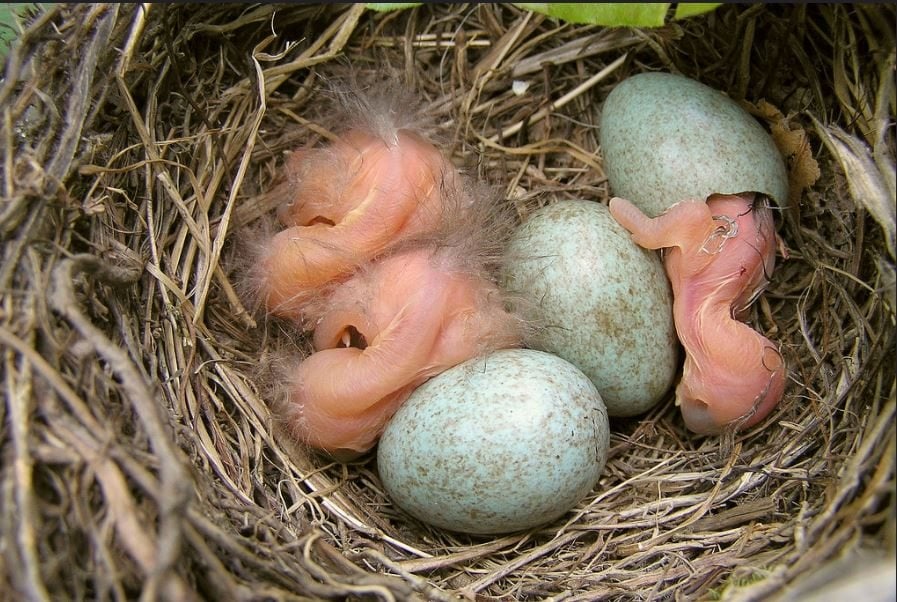 Asynchronous hatching, by Maja Dumont
Asynchronous hatching, by Maja Dumont
What are the parental contributions to asynchronous hatching? The female deposits differing amounts of hormones, immunoglobulins, and antioxidants in the yolk, albumen, and shells of the eggs she lays, which then affects the survival of each hatchling. For instance, in some species yolk antioxidant and immunoglobulin concentrations may decrease across laying order, thus handicapping the immune system of the last hatched chicks. However, in the same species, yolk testosterone concentrations may increase with laying order, which may compensate for poorer immune function by helping accelerate growth and food begging rates.
Does the embryo have a role? There is some research showing that bird embryos can actively modify the action of the hormones deposited in the yolk, and use maternal steroids to benefit their own fitness.…

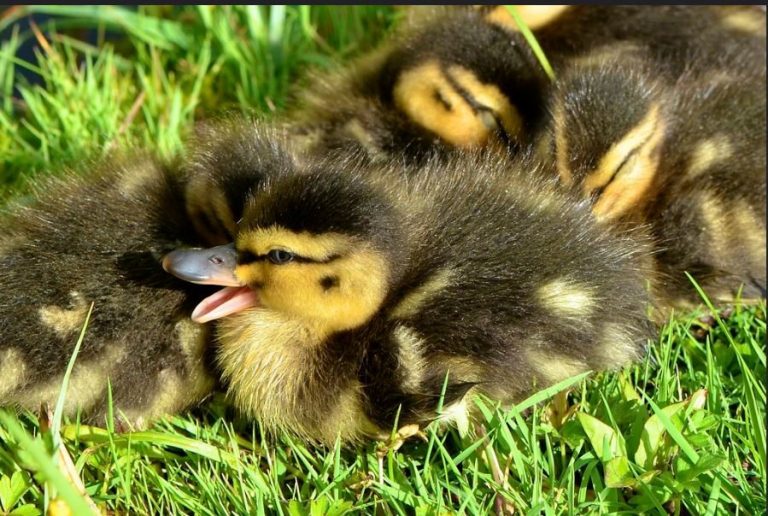
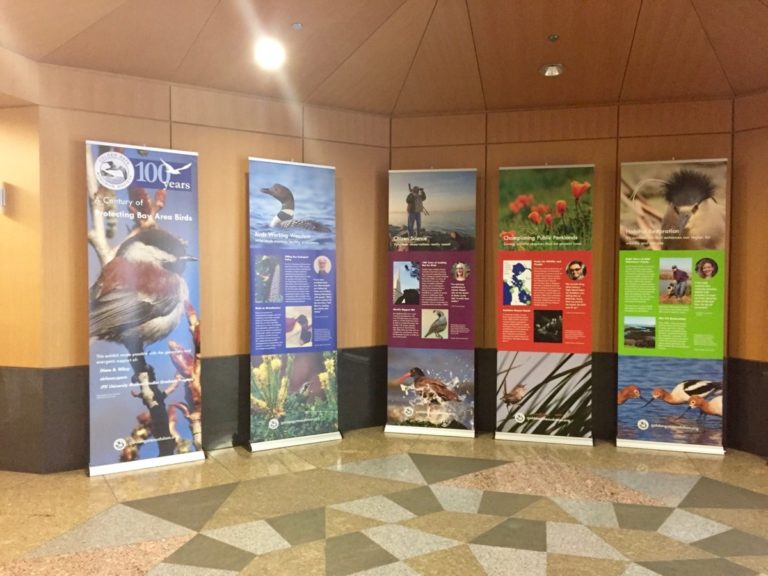
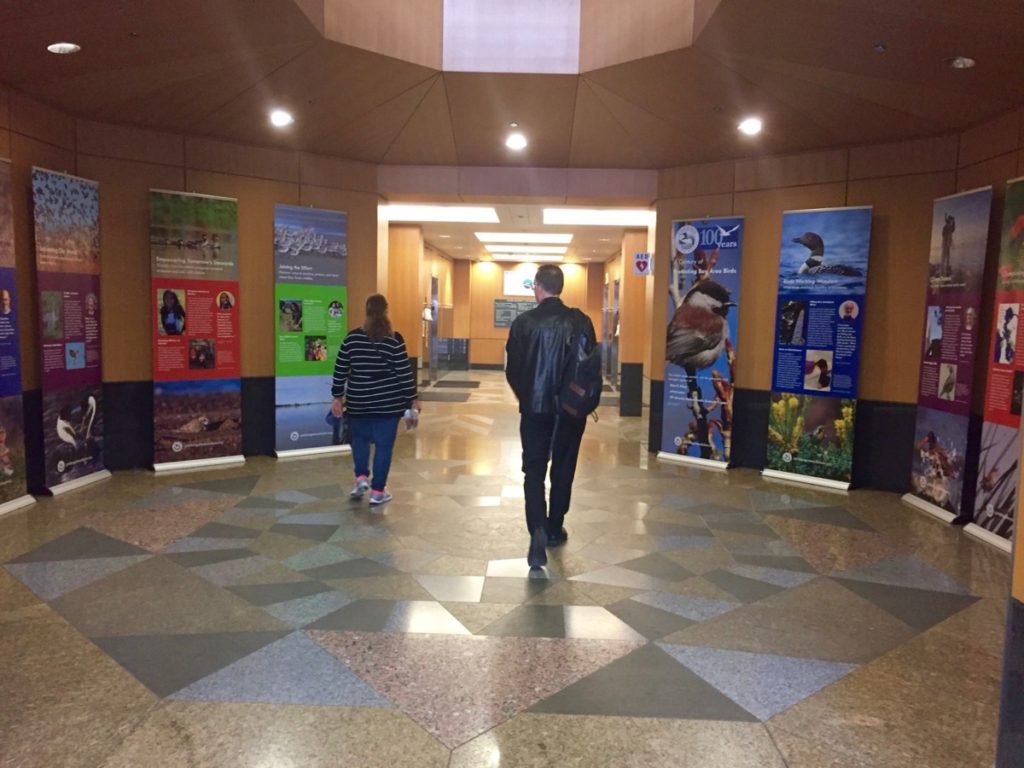 The Centennial exhibit in the Dalziel Building lobby / Photo by Ilana DeBare
The Centennial exhibit in the Dalziel Building lobby / Photo by Ilana DeBare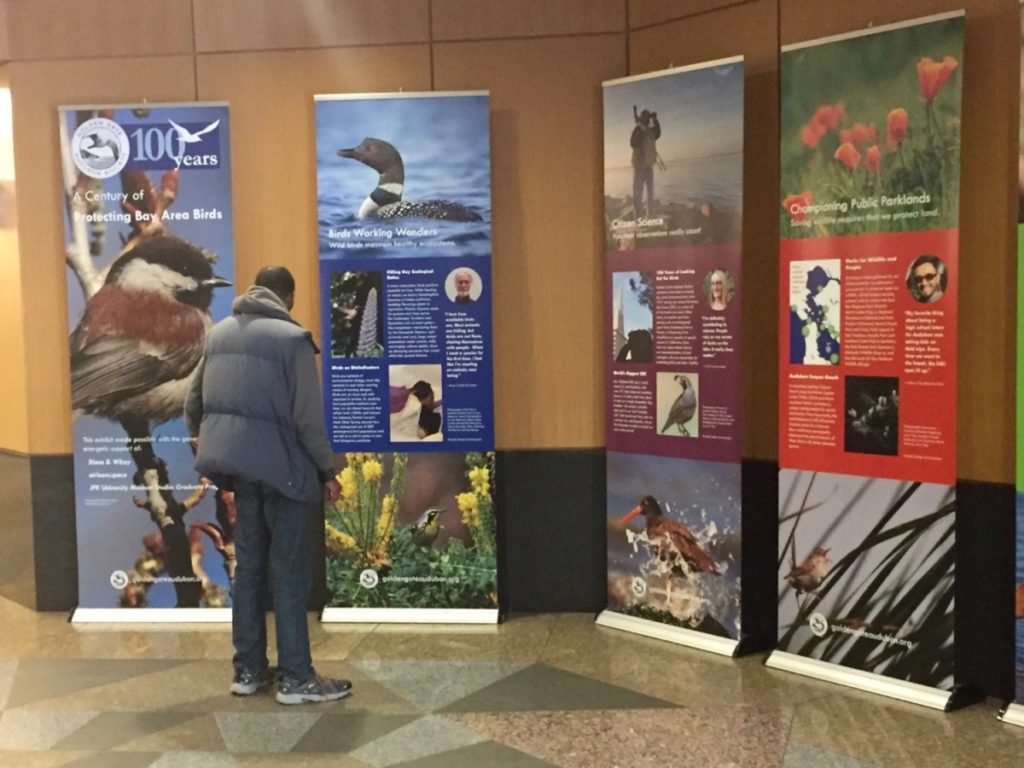 Passerby views the Centennial exhibit. Photo by Ilana DeBare
Passerby views the Centennial exhibit. Photo by Ilana DeBare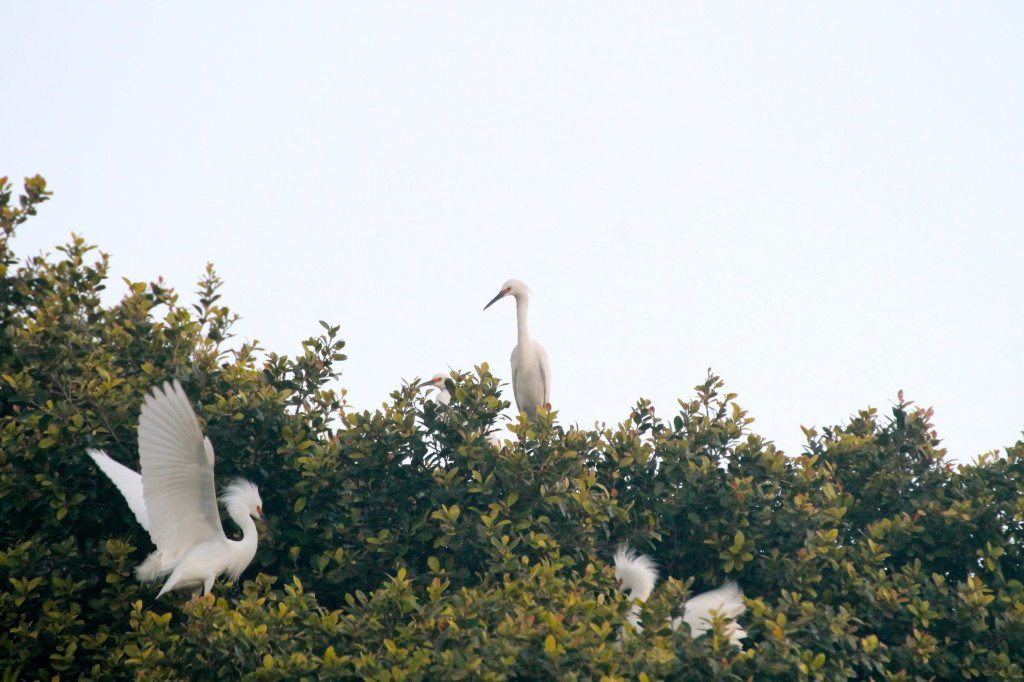 Snowy Egrets nesting in street trees, just a few blocks from City Hall / Photo by Ilana DeBare
Snowy Egrets nesting in street trees, just a few blocks from City Hall / Photo by Ilana DeBare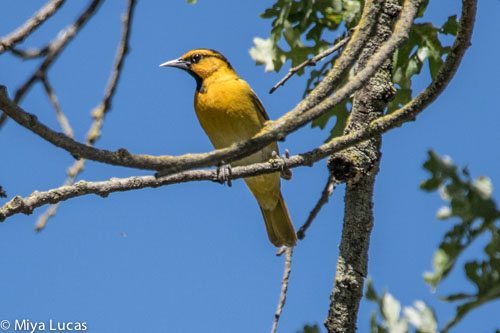
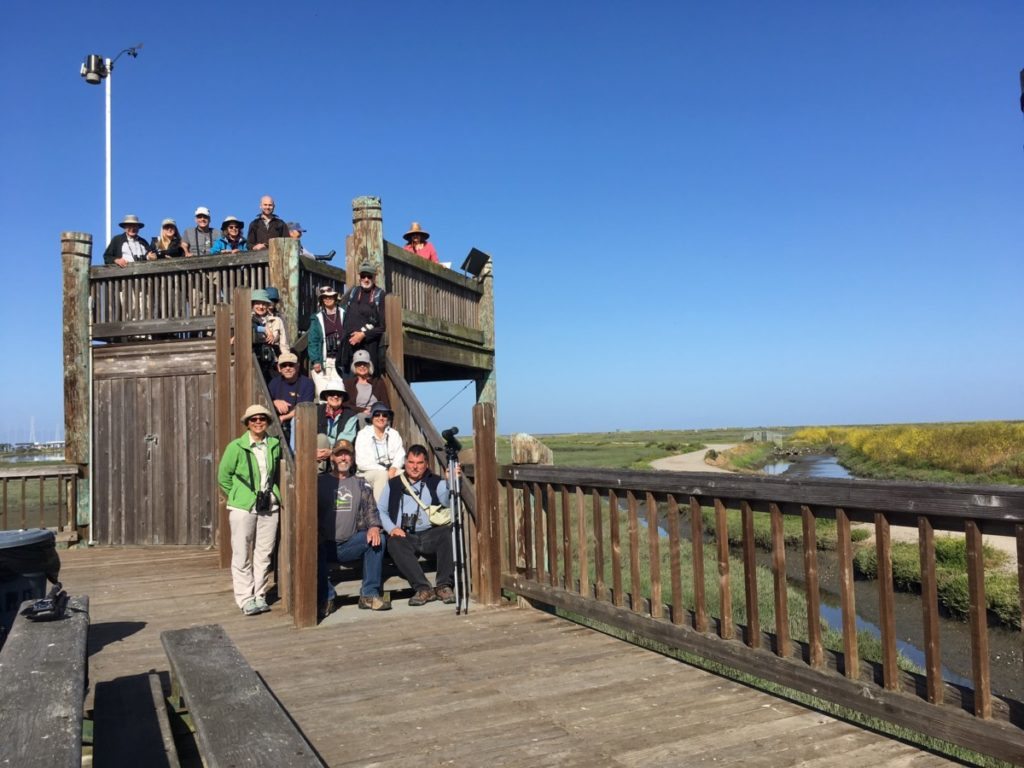 Behind the Gates trip to Hayward Shoreline
Behind the Gates trip to Hayward Shoreline
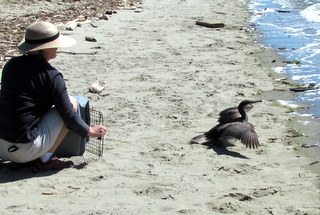 Released a rehabilitated cormorant during the Behind the Scenes at IBR trip / Photo by Marjorie Powell
Released a rehabilitated cormorant during the Behind the Scenes at IBR trip / Photo by Marjorie Powell
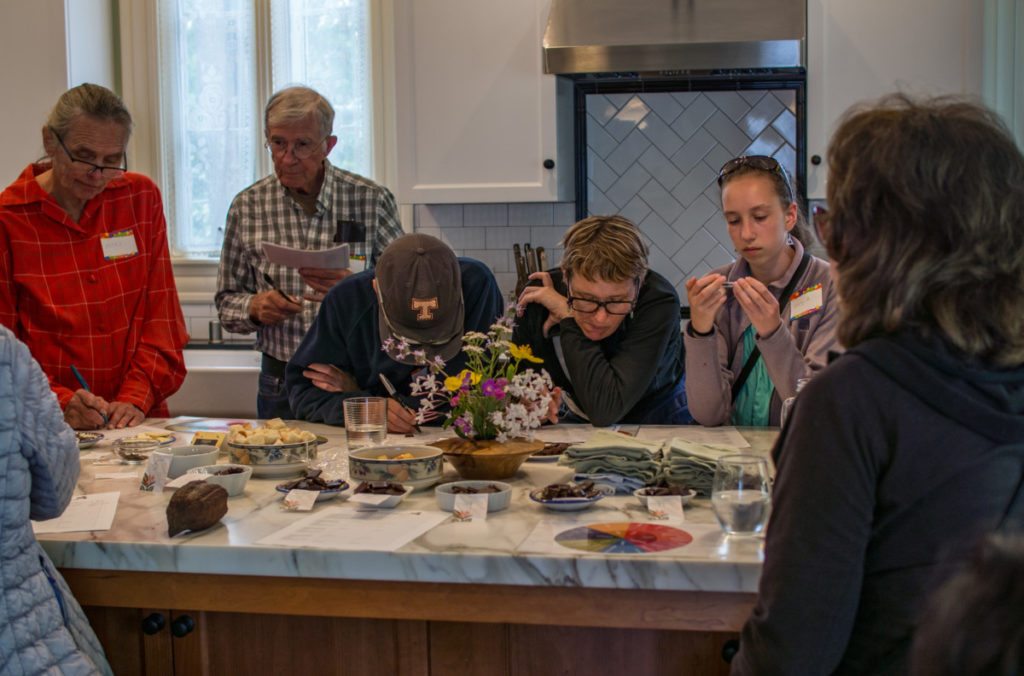 Tasting gourmet chocolates during our first-ever Birds & Chocolate trip / Photo by Leonard Stanton
Tasting gourmet chocolates during our first-ever Birds & Chocolate trip / Photo by Leonard Stanton
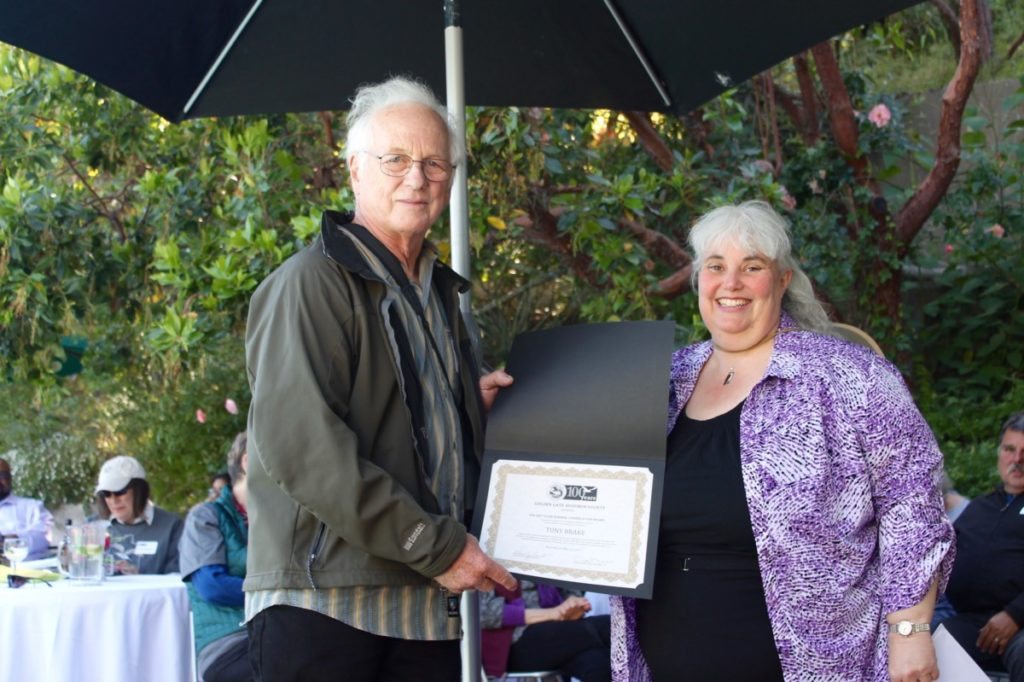 Tony Brake receives the Elsie Roemer Conservation Award from GGBA Executive Director Cindy Margulis.
Tony Brake receives the Elsie Roemer Conservation Award from GGBA Executive Director Cindy Margulis.
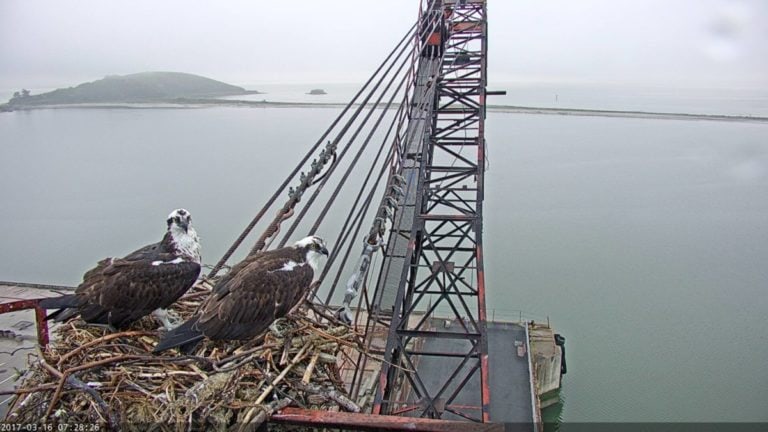
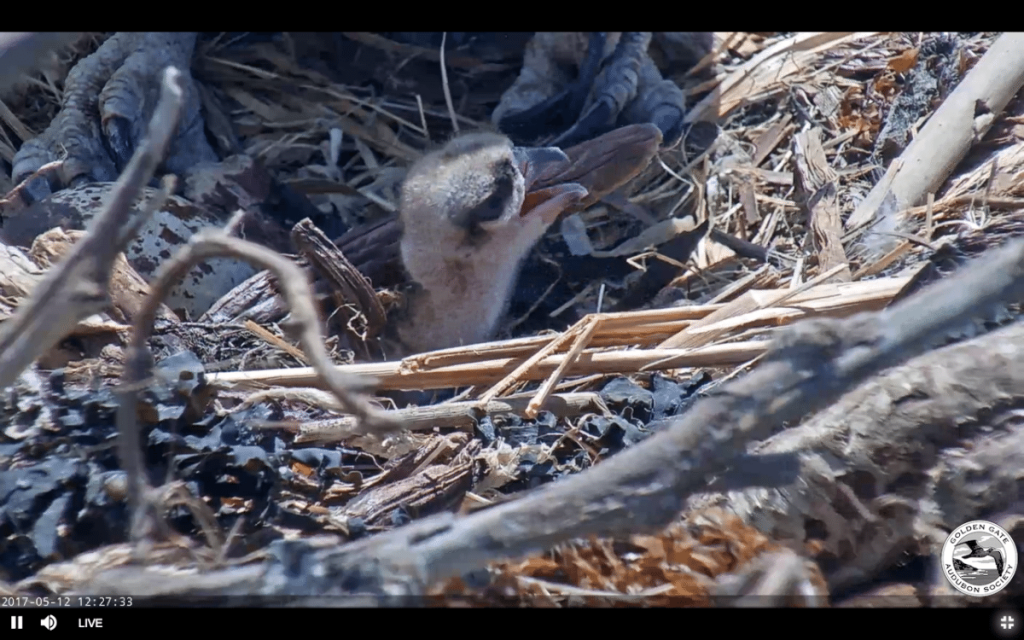 Chick calls for food.
Chick calls for food.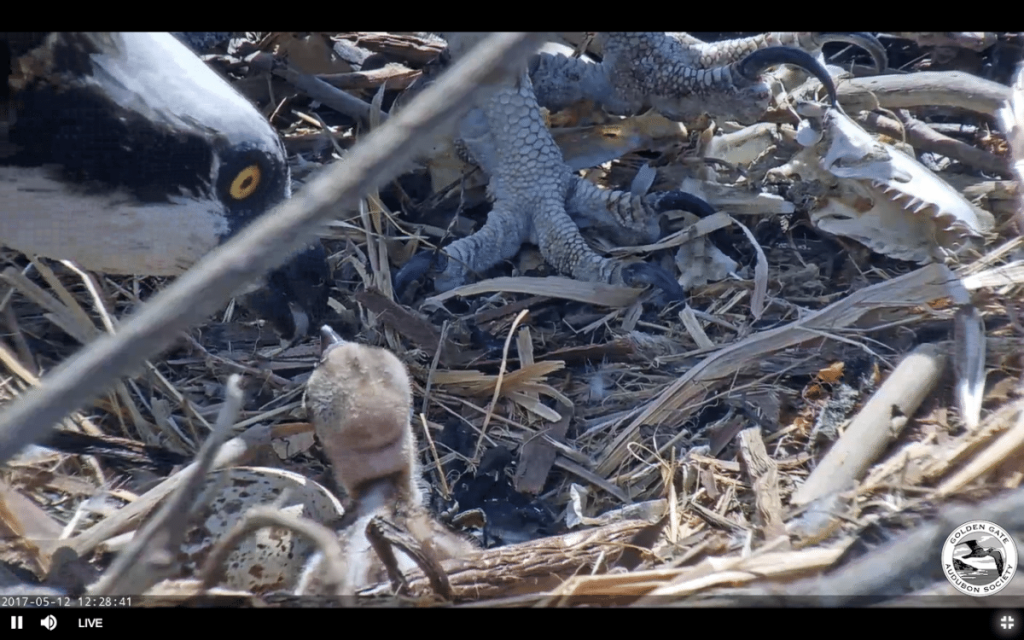 Chick receives bits of fish from one parent while the other stands watch. Note the speckled second egg to its left.
Chick receives bits of fish from one parent while the other stands watch. Note the speckled second egg to its left.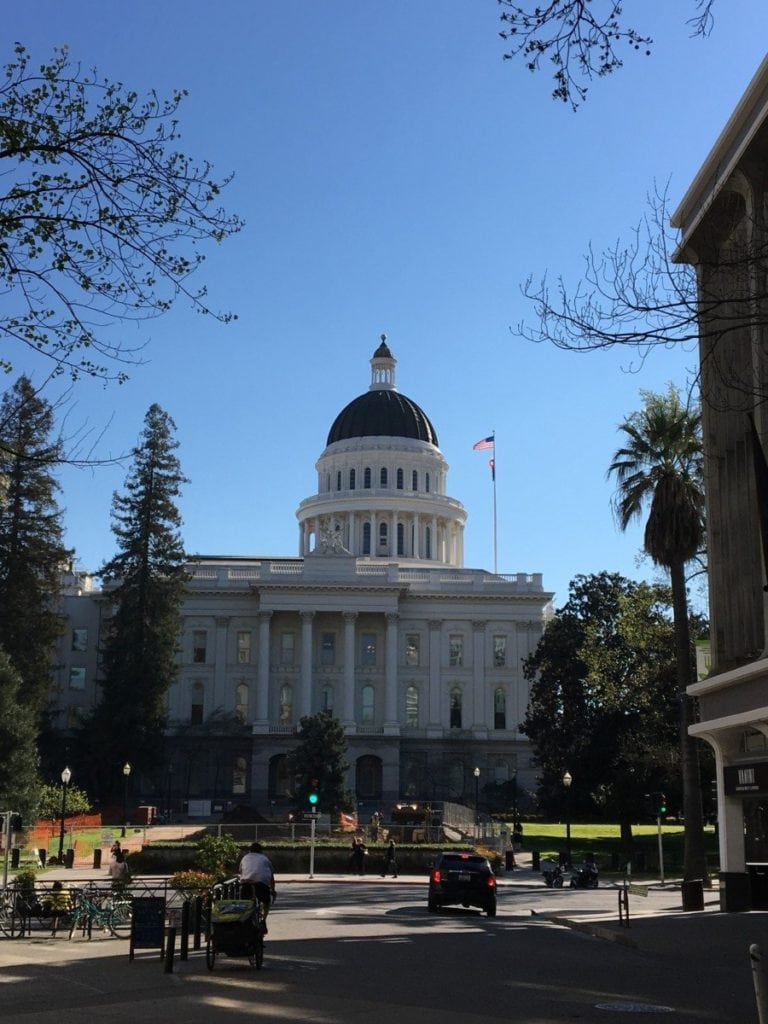
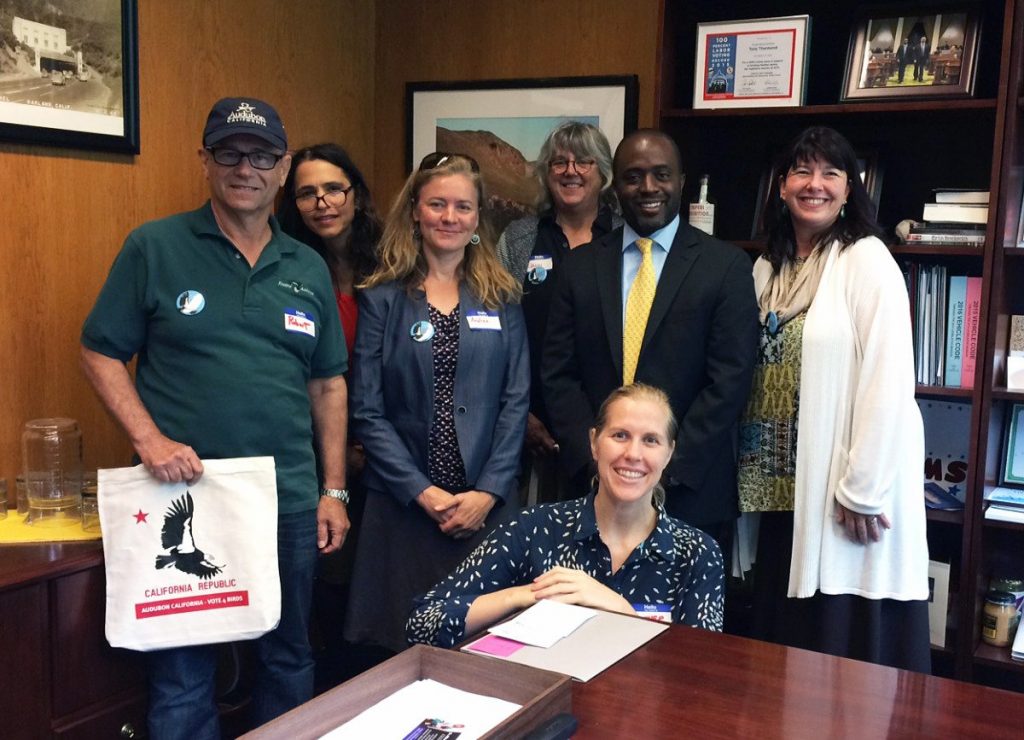 Audubon members met with East Bay Assemblyman Tony Thurmond in 2016
Audubon members met with East Bay Assemblyman Tony Thurmond in 2016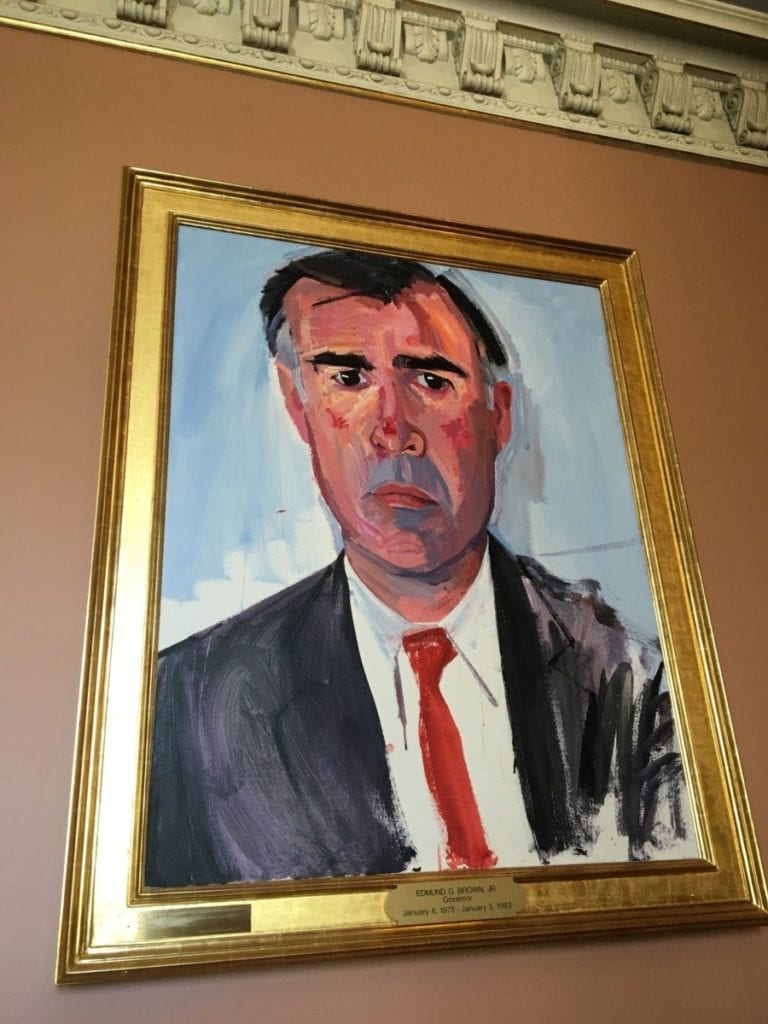 The famous portrait of Gov. Jerry Brown from his first terms in the late 1970s-early 1980s / Photo by Chris Winn
The famous portrait of Gov. Jerry Brown from his first terms in the late 1970s-early 1980s / Photo by Chris Winn